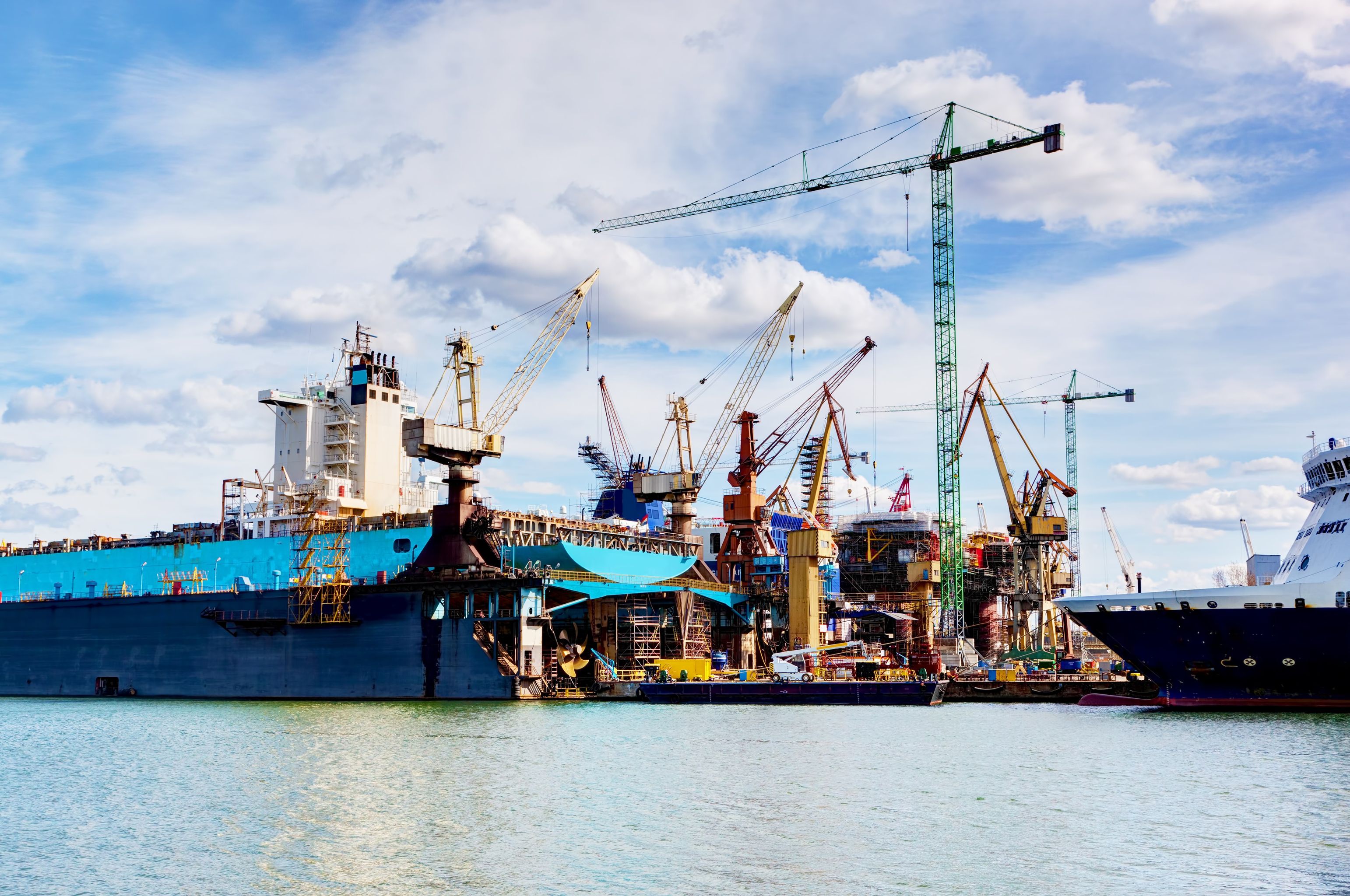The choice of selecting a shipyard is probably one of the most important decisions a shipowner could make. This crucial choice could potentially have an impact on your long-term vessel quality and the operational expenses during the ship’s lifecycle. Therefore, you have to take a careful and measured approach to choosing the right shipyard to build your vessel.
The process of choosing a shipyard
One of the best places to start is to find a proven independent scheme, such as Manufacturer Product Quality Assessment, or MPQA. This service is delivered, normally by Classification Societies and gives you quite a good understanding of the shipyard’s quality and capabilities. From 2008 to 2011, Lloyd’s used a similar scheme to evaluate Chinese shipyards. From roughly 1100 registered shipyards, only around 150 covered the majority of the criteria outlined by Lloyds. Of those, only 50 were announced as first-class builders.
Next, you’ll want to work with an experienced new building supervision company. This is an opportunity for requesting an audit of any shortlisted shipyard. For instance, Risk Design International has experience in shipyard evaluation and our specialists are ready to help you with choosing the right shipyard and successful delivery of the vessel or series of vessels. As a result, we have put together a shipyard assessment document that covers the following areas:
- Assessment of shipyard facilities and building strategy
- Assessment of production capacity and manpower qualification
- Data performance from already built vessels in the same shipyard
Assessing the environment and current conditions of above-mentioned areas is an indicator for the planning, management and resource control of the shipyard. A well-constructed shipyard displays a logical production flow throughout its layout and space.
Assessment of shipyard facilities and building strategy
This process can be subdivided into smaller sectors that have a significant impact on the shipbuilding process, including:
- Warehouse and storage areas: Housekeeping and traceability are important for the building process.
- Shop primer line: The shop primer, steel profile and applied thickness are critical for corrosion protection. To ensure efficiency, steel plates should be treated with a shop primer coating to reduce work during secondary treatment.
- Gas/Plasma Cutting workshop: Proper nesting maximizes the utilization of steel material. Modern gas and plasma units with cutting and marking heads help to shorten sub-assembly and assembly processes. Machine steel beveling increases the quality of butt and filled welding, where available.
- Subassembly workshop: Protection from severe environmental conditions is a must during the sub-assembly process. This process should only be carried out in a dedicated indoor location, by an experienced team. This is vital to pre-heating and temperature preservation for thick and high-tensile plates.
- Block assembly workshop: The requirements for the protection of environmental conditions are the same. There should, however, be an emphasis made on the quality of block inspection. The following standards are all of importance:
- Steel plate material and thickness
- Weld quality
- Alignment of plates and profiles
- NDT Reports
- Dimensional Report
- Blasting hall: These are designated indoor workshops for separate blasting work, equipped with a centralized compressor, ventilation, dust collector and heating system.
- Painting hall: An enclosed working environment guarantees that there will no dust during the painting process. This makes painting easier and more reliable. The painting hall itself is also equipped with a centralized compressor, ventilation, and heating system as well. Workers should have a thorough understanding of IMO PSPC requirements. This is crucial to Ballast tank coating performance through the years.
- Pre-erection area: In recent years, pre-erection has become standard shipyard practice, in order to reduce a newbuilding’s time in the actual dock. You’ll need a shipyard ready to facilitate the transport of large blocks, but it can greatly improve your overall efficiency.
- A dry dock area: Dry dock erection is the most expensive part of newbuilding, taking place in the highest cost part of a shipyard. There needs to be a correctly chosen building strategy that in turn can save a lot of time and money to shipyard and owners.
- Machinery workshop: Type and capacity of machines need to be carefully inspected to ensure that the whole production process is covered.
- Outfitting berth: There needs to be enough crane capacity at the berth to cover outstanding jobs, once the ship is launched from the dry dock.
- Design/Engineering offices: The engineers involved in the shipbuilding process needs to be certified and competent with the use of design software (eg. ShipConstructor, Aveva, NAPA, etc.)
Assessment of production capacity and manpower qualification
Of course, even the best facility in the world won’t mean much if they just don’t have the resources available to work with you. The production capacity of the shipyard and the number of new buildings in progress gives a percentage capacity that is left available for your project. Meanwhile, the ratio of shipyard workers to contractors is an indication of the flexibility and the overall power of the shipyard.
It is important to inquire about the availability (as planned) of the Dry dock slot for your newbuilding project. This information would be a good measure of the shipyard’s production flow and whether it suits your schedule, as planned. It’s also imperative that you evaluate the team’s strength, from management down to shipyard employees. The ratios of employees in production, quality control and design are all indicators of efficacy for your shipyard.
Review of production plans, Gant charts, and schedules comes first. Next, comparing these with your real production needs will help to gauge whether the shipyard can carry out the workload. Can they compensate delays, overcome bottlenecks and, most importantly, complete the project? Will they do it on time, to budget, and according to standards? You can learn all of that during this phase.
Data performance from already built vessels in the same shipyard
Throughout our network of captains and chief engineers, Risk Design International has been able to collect data for the operational phase of vessels. The past performance and vessel delivery of any shipyard could be used as a guide for any future new building. Equipment underperformance, guarantee claims, unexpected repair works are always clear indicators of a poor quality job during the building process in the subjected shipyard. Therefore, visiting the shipyard and inspecting vessels that are at the final stage of the building process is always an excellent approach to verifying the professionalism of the shipyard.
Choosing the right shipyard: Let a professional help you
Want to learn more about our shipyard selection services? Get in touch with us, today, and we’d be happy to answer your questions and get you started with choosing the right shipyard for your needs.



